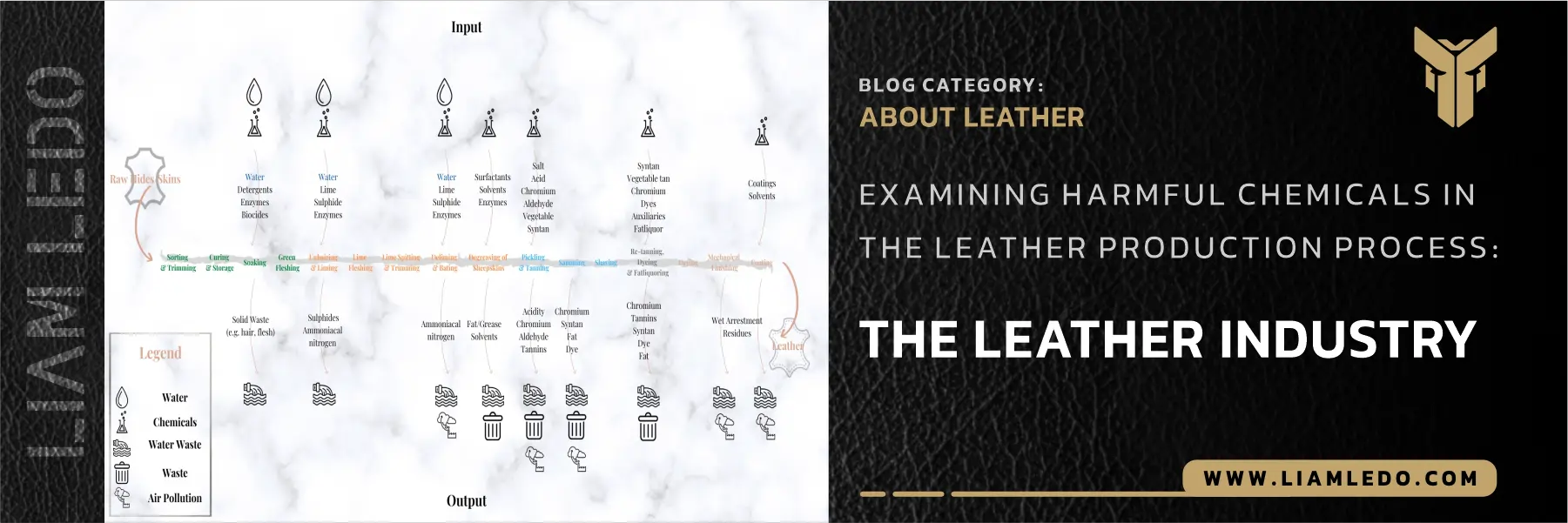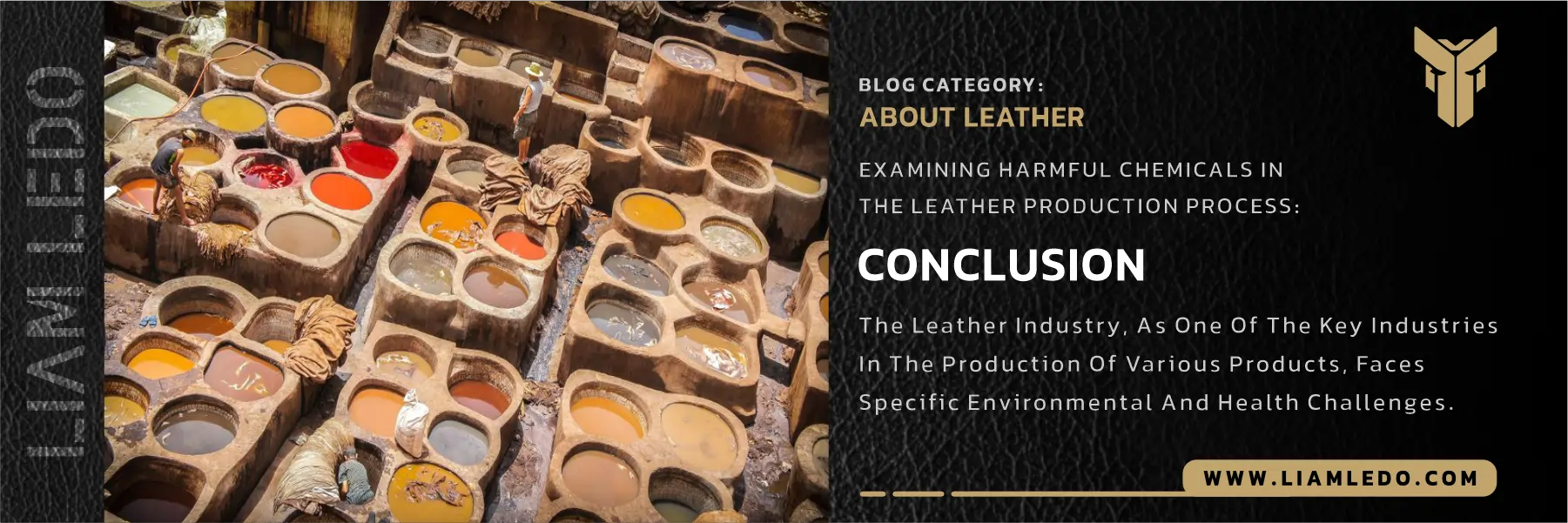Leather Tanning Harmful Chemicals: Understanding Risks and Eco-Friendly Alternatives

The leather industry has a long-standing history, providing high-quality products such as clothing, shoes, bags, and furniture. However, one critical aspect often overlooked is the environmental and health impact of leather tanning harmful chemicals. This article explores the chemicals used in leather production, their potential dangers, and the sustainable alternatives shaping the future of eco-friendly leather products, offering insights for both consumers and manufacturers to make safer choices.
Learn more about leather and make better choices:
1.Understanding the Leather Production Process:
To understand the risks of leather tanning harmful chemicals, it is essential to break down the leather production process into its main stages:
- Skin Preparation: Raw hides are cleaned to remove hair, fat, and other impurities. Chemicals such as sulfides and phenols are often used at this stage to prepare the hides for tanning.
- Tanning: The most critical phase, tanning transforms raw hides into durable leather. Chemicals like chromium (particularly hexavalent chromium), phenols, and plant-based compounds are commonly used. Chromium tanning produces strong and resilient leather but introduces significant environmental and health hazards.
- Dyeing: Leather is colored using synthetic dyes and chemical additives. While dyeing enhances the appearance, it may also introduce pollutants like phenols and other toxic substances.
- Finishing: In the final stage, waxes, coatings, and other chemicals are applied to improve durability and texture. Even finishing chemicals can contribute to environmental pollution if not managed properly.
2.Harmful Chemicals in Leather Tanning:
Several chemicals used in leather production are highly hazardous:
- Chromium (Cr VI): Hexavalent chromium is a potent carcinogen. Direct exposure can cause skin irritation, respiratory problems, and even cancer. Environmental contamination from chromium affects soil and water quality, posing risks to both ecosystems and human populations.
- Phenols: Used in tanning and dyeing, phenols can leach into soil and groundwater, leading to long-term pollution. They also volatilize into the air as toxic gases, affecting air quality and human health. Extended exposure can cause hormonal and neurological disruptions.
- Sulphides: Sodium sulphide is commonly used to soften hides and remove hair. Sulphides can contaminate water and soil and cause respiratory issues, eye damage, and skin problems.
- Arsenic: Occasionally used alongside chromium compounds, arsenic is highly toxic and carcinogenic. Long-term exposure may lead to severe health problems, including cardiovascular disorders and neurological issues.
3.Environmental Impact of Leather Tanning Harmful Chemicals:
The chemicals used in leather production have far-reaching environmental consequences:
- Water Pollution: Toxic substances like chromium and phenols can contaminate surface and groundwater. This not only affects aquatic life but also threatens the safety of drinking water.
- Soil Contamination: Industrial waste and chemical leaks reduce soil fertility, impacting plant growth and food production, especially near leather factories.
- Air Pollution: Phenols and sulphides can release harmful gases, contributing to respiratory issues, environmental pollution, and even climate change.
By understanding these impacts, it becomes clear why eco-friendly leather tanning processes are gaining traction in modern leather production.
4.Health Risks Associated with Leather Tanning Harmful Chemicals:
Exposure to hazardous chemicals in leather tanning can seriously affect human health:
- Skin Problems: Contact with chromium or phenols can cause redness, itching, and inflammation. Workers in leather factories are particularly vulnerable.
- Respiratory Issues: Inhalation of toxic gases from sulphides and phenols can lead to coughing, shortness of breath, and chronic respiratory diseases.
- Cancer Risk: Hexavalent chromium and arsenic are carcinogenic, increasing the likelihood of skin, lung, and other cancers over time.
- Hormonal and Neurological Disorders: Phenols and other chemicals can disrupt the endocrine system and damage the nervous system, causing long-term health problems.
5.Sustainable and Eco-Friendly Alternatives:
In response to the risks of leather tanning harmful chemicals, the industry is increasingly adopting safer and eco-friendly practices:
- Vegetable Tanning: This method uses plant-based tannins instead of toxic chemicals. Vegetable-tanned leather is biodegradable, durable, and safer for workers and the environment. It is widely used in premium products such as vegetable tanning leather bags.
- Chrome-Free Leather Products: By eliminating chromium, manufacturers reduce both environmental and health risks. Consumers seeking chrome-free leather products benefit from safer and more sustainable options.
- Technological Improvements: Modern tanning technologies reduce chemical usage and pollution. Low-energy and clean production processes help minimize environmental impacts while maintaining leather quality.
- Compliance with Regulations: Strict adherence to environmental laws and ISO standards ensures proper waste management and pollution control. These regulations are crucial for mitigating the harmful effects of leather tanning chemicals.
- Education and Awareness: Training workers on safe handling and increasing public awareness about eco-friendly leather tanning processes fosters a safety culture in the leather industry.
6.Why Consumers Should Care About Leather Tanning Harmful Chemicals?
For consumers, understanding the risks of leather tanning harmful chemicals is essential. Choosing sustainable products, such as natural leather alternatives for toxic tanning, protects personal health, supports environmentally responsible practices, and encourages industry-wide change. Brands offering eco-friendly leather tanning processes often emphasize transparency, allowing consumers to make informed choices.

Conclusion:
The leather industry is at a critical junction. While leather tanning harmful chemicals have historically played a major role in creating durable leather, their impact on human health and the environment is undeniable. Transitioning to chrome-free leather products, adopting vegetable tanning methods, and implementing modern technologies can dramatically reduce these risks. Compliance with environmental regulations and increased public awareness are also key steps toward a sustainable future.
By prioritizing eco-friendly practices and consumer education, the leather industry can continue producing high-quality products while protecting both people and the planet. Whether you are purchasing vegetable-tanned leather bags or supporting brands using eco-friendly leather tanning processes, every conscious choice contributes to a healthier, safer, and more sustainable industry—shaping the future of responsible leather production.
Source: The Gentleman’s Gazette | Wikipedia







